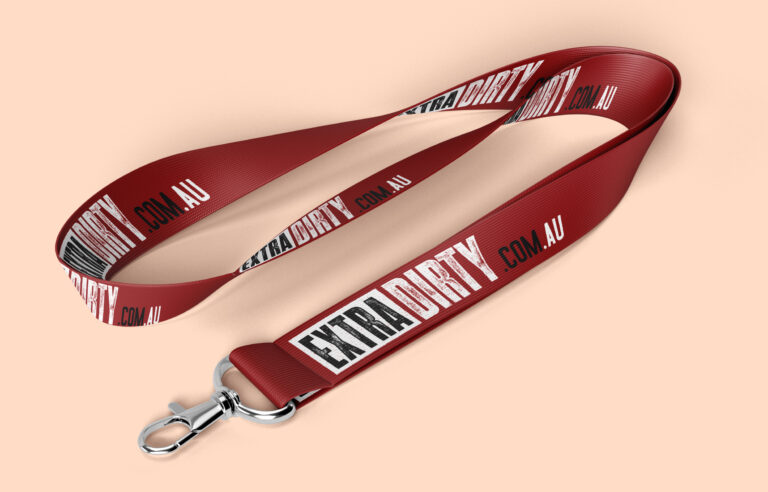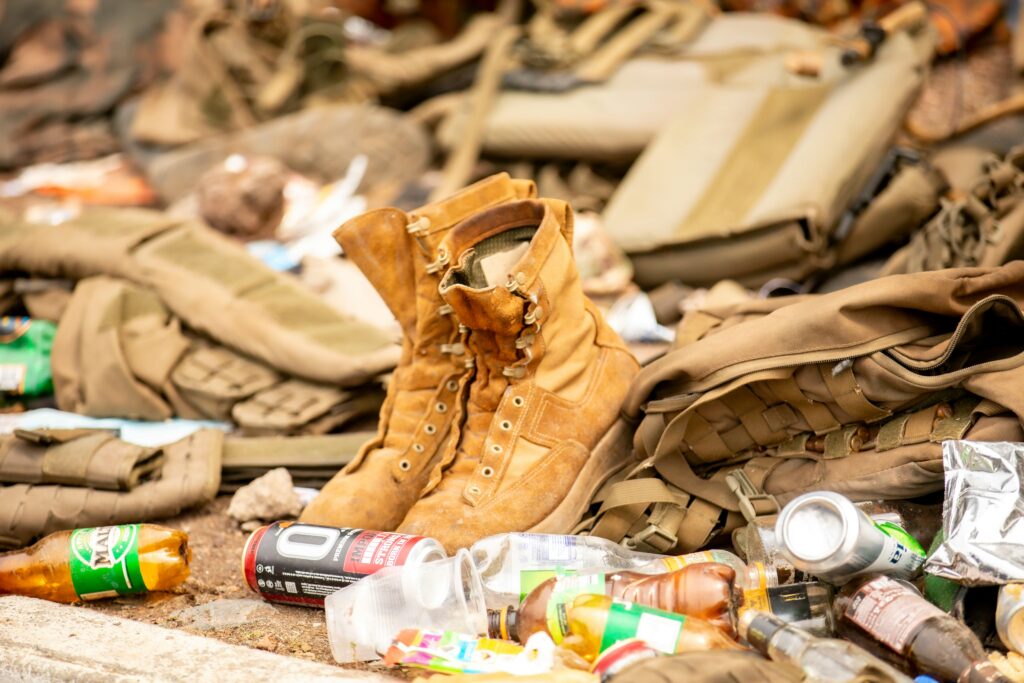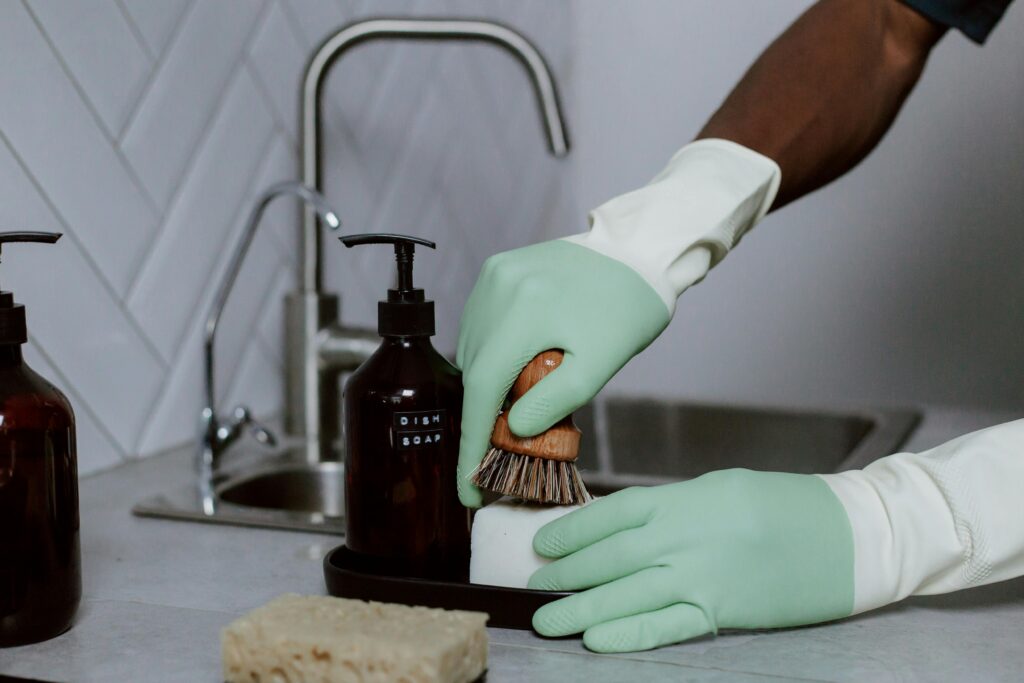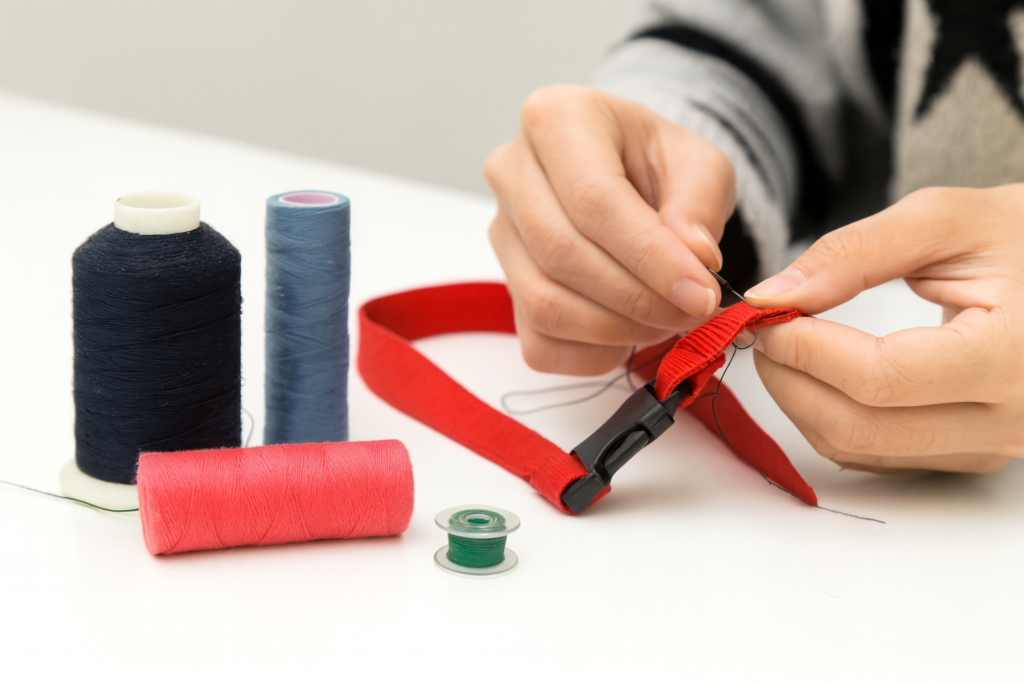Blog How to Care for and Reuse Your Lanyards

Lanyard care and reuse contribute positively to sustainability efforts. Whilst small items, like lanyards, often get overlooked in sustainability efforts, it is these everyday products that often add up over time and have significant environmental and financial implications.
Lanyards are commonly used almost everywhere we look, whether that be in schools, workplaces or event organisation, lanyards are often used as methods of identification, promotion and security.
By learning how to reuse and upcycle lanyards properly, we are able to keep them out of the landfill and contribute to waste reduction by extending their lives. These small acts can also have other benefits, such as financial savings.
Whether you’re a community group, part of an educational institute, or just someone who’s eco-conscious and interested in reuse culture, there are many ways you can reuse your lanyards to make a positive impact. In this article, we’ll highlight some easy tips and tricks.

Lanyard care includes cleaning practices that preserve your lanyard’s materials, thereby improving longevity. This can be done in a number of ways, including through gentle washing, spot cleaning, and proper drying methods, which should all be tailored to your specific lanyard.
Cleaning methods should be specific to your lanyard’s material. For example, polyester lanyards are machine washable and should be put on a gentle cycle using cold water. It is also a good idea to pop them into a mesh laundry bag in order to protect clips or buckles.
Other lanyards, such as those made from cotton and eco-friendly lanyards, should be hand washed with mild detergent. Putting them in the machine can cause the material to fray, or the colour to wash out, either bleeding or transferring to other materials.
If your lanyard is printed or has specialty finishes, it is generally better to spot clean with a damp cloth in order to prevent fading.
Some common mistakes that people make when washing lanyards involve overwashing, exposing lanyards to high heat, or soaking lanyards that are made with metal clips, which are prone to rusting.
Removing stains from your lanyard is best done with targeted spot cleaning using a diluted soap and a soft-bristle brush. Whilst tempting, it is important to avoid harsh cleaners and bleach, which can degrade both the fabric and stitching.
Drying your lanyard should never be done in the tumble dryer, as this is likely to cause damage. Simply air drying your lanyard by either laying it flat or hanging it in the shade is the best way.
When it comes to lanyard hygiene and reusability, washing around once a month is often best practice.

Old lanyards can serve new functions in everyday life, helping reduce waste while adding convenience or creativity. Lanyard repurposing opens up a world of opportunity for DIY crafts, upcycling accessories and classroom projects.
Used lanyards that have reached the end of their lifecycle can be easily revamped at home, school, or work. They can quite easily be remade into keychains, bookmarks, zipper pulls, plant ties, or cord wraps, for example.
These simple DIY craft projects give lanyards a second life and reduce how much waste is reaching our landfills. It also challenges us to think creatively, making interesting new items, and promotes everyday sustainability in creative, practical ways.
In classrooms, they make fun DIY projects for children and older students, whilst in offices, office reuse challenges make great team building exercises.
If you’ve made the decision to look after what you already have, there are some things you’ll need to know about the different lanyard materials, as they require different care approaches to maximise longevity and performance.
Common lanyard materials and their care:
Usually, the most durable fabrics include synthetic ones, such as polyester lanyards and nylon lanyards. These can easily be machine-washed, but should only be air dried. Other lanyards, such as cotton lanyards and eco-friendly lanyards, should only be hand washed sparingly and air dried in the shade.
Reading the material care tags is essential when looking after your lanyard, as they all vary. When choosing new lanyards, consider not only how long they will last but also the environmental impact of the material.
Storing lanyards properly is a simple but often overlooked part of lanyard care. Improper lanyard storage can lead to tangling, fraying, and bent clips, which all contribute to reduced lanyard lifespan and usability.
There are some simple tips to improve your lanyard’s lifespan, including:
These organisers help to reduce tangling, fraying and pulling on lanyards. By making the organisation of your lanyards a habit, you’ll easily add to their longevity.
If you’re an event organiser, it is important to carefully bulk store your lanyards for the next event. Using labelled bins and hanging racks is the best way to avoid tangling, which not only reduces the lanyard’s lifespan but will also save you a lot of frustration on the next event day.
Lanyards often show wear before they truly need replacing. Luckily, this wear and tear can typically be mended with some quick work, extending the life of your lanyard.
Whilst good quality lanyards can last upwards of a year, there is some wear and tear damage you can expect, even from quality products. Some lanyard damage you should look out for includes frayed edges, broken clips, faded prints, as well as loose or unravelling stitching. Luckily, all of these issues can be solved with some quick and easy sustainable repairs.
These types of damage can be reversed through most repair kits, which include needles and thread, fabric glue, and replacement clips.
Common problems and how to solve them:
Whilst many of these lanyard repairs are simple to do, and can be done in less than 5 minutes, some repairs may warrant a new replacement option. For example, if the lanyard fabric itself has significantly thinned, torn, or the branding and print have worn beyond recognition, a full replacement is likely the better option for both appearance and safety.
That said, choosing to repair smaller issues first is a practical and sustainable action; it reduces waste, extends the life of your lanyard, and helps you get the most value before deciding to discard and replace.

Lanyards don’t need to be discarded after use, especially in places where creativity complements practicality.
Educators who work in schools can easily repurpose old school lanyards in fun and functional ways, whether using them as student name tags, classroom labels or as a part of arts and craft projects. Group-led upcycling sessions, where students can work together to collaborate and brainstorm new uses for old lanyards, are great ways to get busy minds working and contribute to sustainability education.
Even office spaces can get creative and start using old lanyards for updated drawer tags, colour-coded role identifiers, or reusable internal event badges, making them great for workplace organisation and bonding.
Upcycling office supplies and classroom crafting is a great way to show your commitment to sustainable practices, encourage team bonding and creativity, and lift community spirit, all whilst reducing waste.
Schools can even integrate lanyard reuse into the curriculum as part of sustainability lessons, while offices may choose to weave it into employee-led green initiatives, ensuring these small actions contribute to a bigger culture of environmental responsibility.
While there are many things you can do to properly care for and repair your lanyard, replacement is sometimes necessary.
There are some things you should look out for, which are signs that it’s time to replace your lanyard. Some key lanyard damage and replacement signs to look out for include damage that may pose safety risks, such as broken clips, severe fraying and tearing, or weakened stitching near attachment points.
Minor issues such as small loose threads or a lightly scuffed clip can often be repaired, but if the fabric integrity is compromised or the clip no longer secures properly, replacement is the safest option.
Routine check-ins and safety checks for workplaces and schools with shared lanyard systems are a good approach to keeping wearers safe. Replacing lanyards carefully and thoughtfully supports sustainable approaches to lanyard use and helps to reduce unnecessary waste while keeping wearers safe. When lanyards can’t be repaired, look for ways to recycle or repurpose them, for example, reusing clips, donating fabric for crafts, or checking with local textile recycling programs, before sending them to landfill.

Taking care of your lanyards, whether that be by cleaning them properly, storing them neatly, or mending small issues, can help them last much longer and contribute to everyday waste reduction.
By following these small steps, fewer lanyards end up in the landfill, making them not only better for the environment but also helping to create sustainable habits in your everyday life. Whilst it’s easy to overlook items like lanyards, they can have a significant impact on total environmental waste.
It might seem like a small thing, but small choices add up, and taking care of the little things can make a big difference. Whether you’re reusing and regularly maintaining your lanyard, or finding creative reuse options, you can contribute to circular designs, sustainable habits and foster a reuse and recycle mindset.
Ready to make your next event more sustainable? For expert advice on custom lanyards and eco-friendly event supplies, contact our team by calling 08 8363 4850 or emailing [email protected] for product recommendations.


Join our mailing list to receive product information, endless inspiration and 10% off your next order!
Monday – Friday 8:30 AM-8:30 PM
Saturday 10:00 AM-5:00 PM
Sunday CLOSED
38 Little Rundle Street Kent Town SA 5067
08 8363 4850
ABN: 62 239 772 879
The Wristband Co. is located on the traditional lands for the Kaurna people, and we respect their spiritual relationship with their Country. We also acknowledge the Kaurna people as the custodians of the Adelaide region and that their cultural and heritage beliefs are still as important to the living Kaurna people today.
Payments Accepted